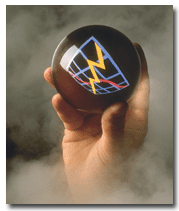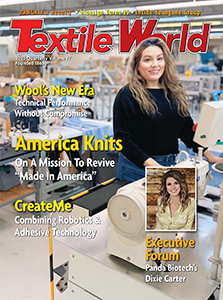
The China State Development Planning Committee has established that Chinas textile industry
should pursue the worlds technical development by increasing technical progress and industrial
upgrading. As part of its 10th five-year plan, the goals, broken down by industry segment, are as
follows:Cotton Industry:Continue to move from shuttle looms to weaving machines.Enhance the share
of new technologies, such as blowing-carding units, combers and shuttleless looms.Sixty percent of
the spinning machines should reach the 1990s international level, as well as 30 percent of the
combers, 50 percent of knot-free and fine-count yarn, and 40 percent shuttleless cloth.Wool
Industry:Continue to replace old wool spindles. Actively employ new techniques such as bicomponent
and wrap spinning.Multiply materials to increase variety.Develop high-count yarns and lightweight
products, and increase the share of high-rank fabrics to 70 percent for the purpose of expanded
exports.Linen Industry:Optimize the existing linen-processing capacity.Stress the development of
degumming of ramie; combing; draft-zone spinning; dyeing, printing and finishing techniques; and
technologies for evenness, colorfastness and brilliance of textile strands.Improve the convenience
of apparel and expand the usage in garment and household textiles.Silk Industry:Replace the old
production capacity of silk reeling, silk spinning and silk weaving; and accelerate the technical
reform of existing equipment. Develop a new silk composite fiber with real silk as a main factor.
Realize the serialization of silk-content material. Develop high-level real silk products.Enhance
the level of finishing techniques such as shrink-proof and anti-crease. Develop chemical silk-like
products.Develop silk products of blended spinning, interlacing and cross doubling.Fully
demonstrate the softness, prettiness and comfort; and wholly promote the quality of silk
fabrics.Knitting Industry:Emphasize increasing the share of large-diameter circular knitting
machines. Enhance the design capacity for new products. Stress the development of new materials and
the application of environmental fibers. Develop health-giving knitted fabrics, knitted outerwear,
high-grade knitted underwear, and high-grade warp-knitted fabrics.Expand the export of knitted
fabrics.Chemical Fiber And Chemical Fiber Material Industries:Differential rate of chemical fiber
in 2005 should amount to 40 percent; and the big enterprise of annual output of more than 100
thousand tons should make a proportion of about 60 percent in terms of production capacity. Build
several bases of chemical fiber and material production. Construct effective connections between
upstream and downstream. Form a processing vertical system from material, laddering to finishing
for the purpose of enhancing risk-tolerance. Emphasize the development of new materials, such as
xylene formate, glycol, caprolactam and acrylonitrile. Actively develop new varieties of synthetic
fiber and expand their application field. Stress the development of functional fibers, differential
fibers and compound fibers in the development, production and application of a new generation of
multifunctional, high artificial, fine-denier and blended filaments as represented by polyester
filament. Promote the production of silk-like and wool-like fabrics, which have the characteristics
of new synthetic fibers. Highlight the development of new types of antistatic,
high-moisture-absorbent, high anti-pilling tendency and flame-retardant fibers. Actively research
and develop new solvent spinning process for cellulose fiber. Speed up the application of viscose
environmental technology.Adopt environment-protecting measures in the treatment of three wastes of
viscose and the treatment of pulping water.Industrial Textile Industry:Actively develop industrial
textiles based on demand. Make industrial textiles the new developing point of industry and develop
tent fabric, cultivation base, geotextiles, medical textiles, industrial textiles, construction
textiles, environmental fabric, lagging material, packing material, skeleton material and car
upholstery material.Textile Machinery Industry: Spare no efforts to launch 40 machinery development
projects in chemical fiber, spinning, weaving, knitting, and dyeing and finishing sectors, in order
to meet the need for industrial upgrading and equipment updating. Research and develop large,
abbreviated and serialized equipment for polyester, polyester fiber, acrylic fiber, urethane
elastic fiber and viscose. Develop new generation of blowing-carding units, combing machines,
spinning-winding units and spinning machines. Enhance the technical level and liability of
auto-winders and shuttleless looms develop their serial products and their auxiliaries.Research and
develop a new generation of electronic jacquard circular weft-knitting machines, warp-knitting
machines and computer flat-knitting machines. Develop a new generation of machines for predyeing
and printing treatments, dyeing, printing and finishing.Broadly use electronic technology.Dyeing,
Printing And Finishing Industry:Continue reforming the technology because printing, dyeing and
finishing directly influence color, hand and style.While introducing foreign technologies, also
develop our own technologies and intellectual property. The technology, technique, equipment,
dyeing and printing stuff and aids will develop accordingly along sectors of spinning, weaving,
dyeing and garment.Raise the level of technologies for natural fiber finishing; artificial chemical
fiber dyeing and finishing; blended and compound fiber dyeing and finishing; enzymatic finishing;
clean processing; laser lignette; and non-stencil dyeing, finishing and printing.Develop
high-value-added products and environmental products. The share of high-grade fabrics will reach 60
percent at the time, which will satisfy the need for garment industry and export.Garment
Industry:Optimize the capacity of garment processing. Well associate garment processing with
designing and fashion tracing. Associate production with marketing. Actively adopt the strategy of
brand and increase the profile of Chinese brands in domestic and international markets.Pay more
attention to the development of well-known brands of clothing, especially for children, the
elderly, the middle-aged and special usage.Research and develop environmental, health-giving
clothing and clothing for rural areas, for the purpose of satisfying multilevel demand of the
domestic market and also to expand export.
Source: CITME Organizing Committee
September 2002




